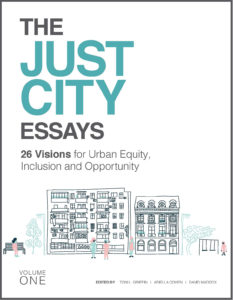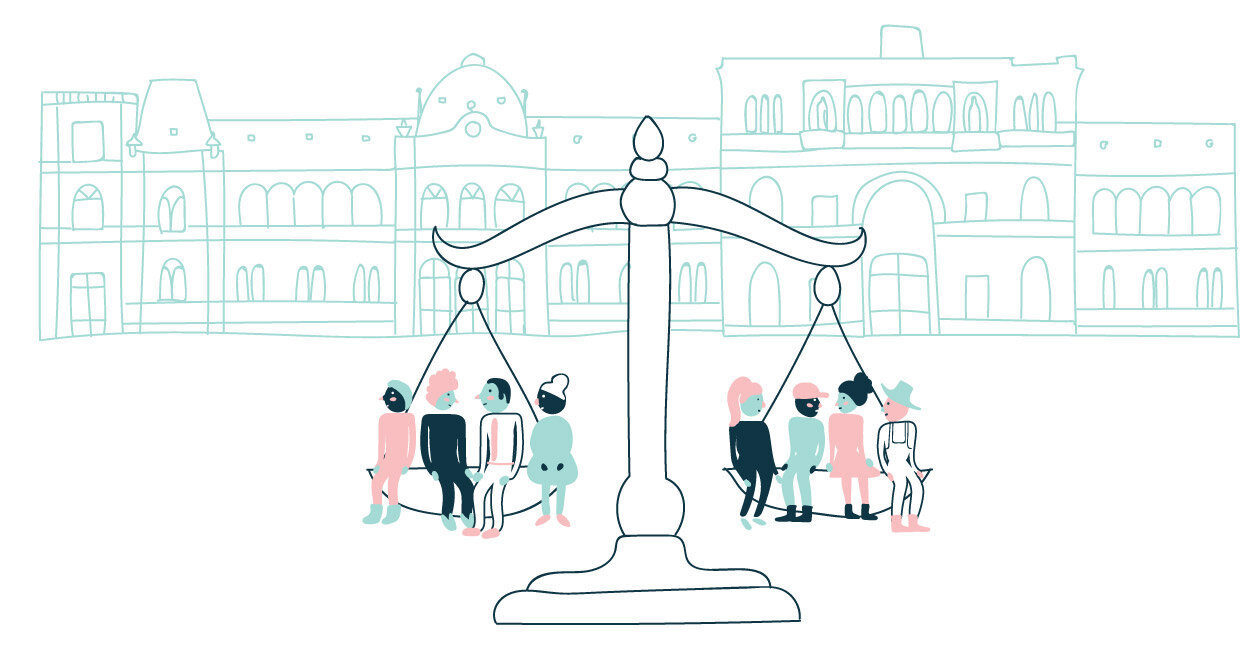“Five years ago, the Harvard Graduate School of Design’s Just City Lab published The Just City Essays: 26 Visions of Inclusion, Equity and Opportunity. The questions it posed were deceptively simple: What would a just city look like? And what could be the strategies to get there? These questions were posed to mayors, architects, artists, philanthropists, educators and journalists in 22 cities, who told stories of global injustice and their dreams for reparative and restorative justice in the city.
 These essays were meant as a provocation, a call to action. Now, during these times of dissonance, unrest, and uncertainty, their contents have become ever more important. For the next 26 weeks [starting June 15, 2020], the GSD and the Just City Lab will republish one essay a week here and at designforthejustcity.org. We hope they may continue conversations of our shared responsibility for the just city.
These essays were meant as a provocation, a call to action. Now, during these times of dissonance, unrest, and uncertainty, their contents have become ever more important. For the next 26 weeks [starting June 15, 2020], the GSD and the Just City Lab will republish one essay a week here and at designforthejustcity.org. We hope they may continue conversations of our shared responsibility for the just city.
We believe design can repair injustice. We believe design must restore justice, especially that produced by its own hand. We believe in justice for Black Americans. We believe in justice for all marginalized people. We believe in a Just City.”
—Toni L. Griffin, Professor in Practice of Urban Planning, founder of the Just City Lab, and editor of The Just City Essays
Justice that Serves People, Not Institutions
By Mirna D. Goransky
The purpose of this essay is to share some considerations about the meaning of “just city” from the perspective of a lawyer dedicated to the reform of justice administration and, in particular, to the design of systems that promote, encourage and facilitate the approach of justice for the people. This historically means not only a change in the rules and culture but also a change in the design of the spaces in which justice is administered.
It is also written from the perspective of a city dweller from Buenos Aires, a city in which more than 3 million people live, and where 1.2 million cars and 1.2 million people in public transportation arrive every day from the suburbs. Traffic and traffic violations are one of the most serious problems and affect our everyday life in a dramatic way.
The guiding principle of these reflections is that a just city is only achieved when its inhabitants have a sense of belonging, respect for the rights of others and for the place in which they live in. In no other aspect is this clearer than in transit, in which the disregard for the laws brings enormous cost not only in human lives but also can easily become a very heavy burden in everyday life, in which aggression and lawbreakers are the norm. For example, in Argentina it can be said that traffic rules are not respected and more than 7,000 people die each year in traffic accidents, and more than 120,000 are injured in varying degrees. This is one of the highest rates of mortality from traffic accidents and is significantly higher when compared with the rates of other countries in relation to their population and number of cars.
When I think of a just city there are some general issues that arise and are central to its development. First, is the need for an equitable distribution of resources among all the people and neighborhoods, in accordance to fairness. Fairness does not necessarily mean equal amounts of money everywhere but an adequate amount of resources to ensure that people from all parts of the city have the same opportunities to enjoy the benefits of community life, including access to education, health, safety, justice, etc. Continue reading on designforthejustcity.org…
